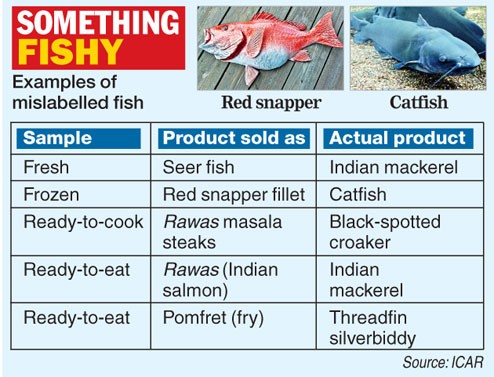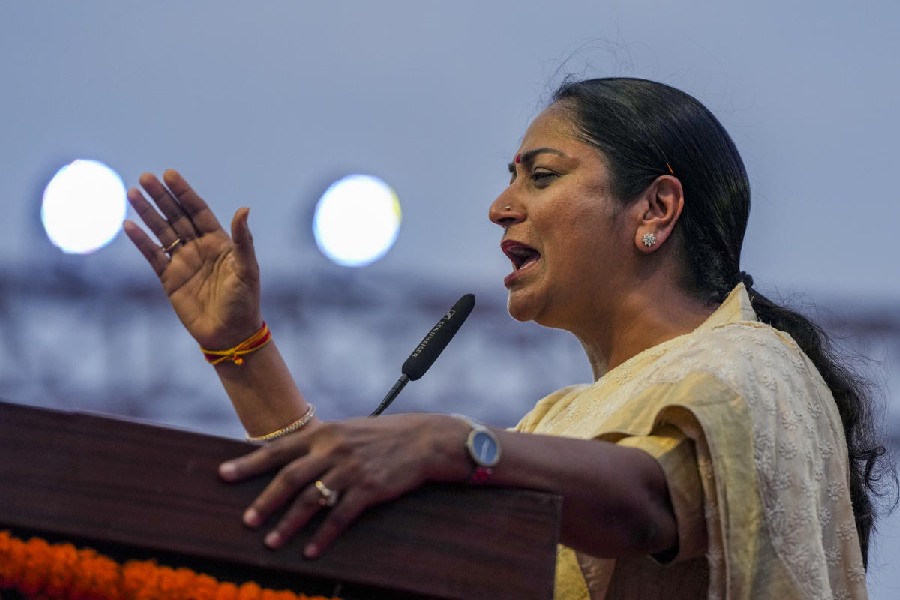
New Delhi, Aug. 2: Watch out, that steak of seer fish may actually be a chunk of mackerel, the red snapper fillet may be catfish, and the fried pomfret may turn out to be threadfin silverbiddy.
A study by government scientists has indicated that about one-fifth of the seafood sold in bazaars, shops, supermarkets and restaurants is mislabelled.
The scientists analysed genetic material from samples of seafood and used a global database of the genetic fingerprints of fish to identify each species. They found that 22 of the 100 samples of fresh, frozen, ready-to-cook or ready-to-eat seafood they had collected had been mislabelled.
Their study is among the first to establish the prevalence of mislabelled seafood across the country.
"It is unclear whether the mislabelling is intentional or unintentional," Kannuchamy Nagalakshmi, a fisheries scientist at the Central Institute of Fisheries Education, Mumbai, which operates under the Indian Council of Agricultural Research, told The Telegraph.
In several instances, the actual fish sold was from a less expensive species than the one it was labelled as belonging to.
The study detected that the Pangasianodon hypophthalmus or catfish, which costs under Rs 200 a kg, was being sold as the red snapper, which costs about Rs 800 a kg, or as the rawas (Indian salmon), which typically costs about Rs 500 a kg.
Nagalakshmi and her colleagues picked samples of fresh, frozen and ready-to-cook seafood from local markets, and ready-to-eat fish from restaurants and supermarkets across Gujarat, Maharashtra, Goa, Kerala, Tamil Nadu and Andhra Pradesh.
The researchers say that seafood mislabelling appears to be a global trend, having been documented over the past decade from Brazil, Italy, North America, South Africa and Britain, with wide variations in the proportion of samples mislabelled.
A survey of 96 samples of fish and seafood from commercial markets and restaurants in Canada and the US eight years ago had found one-fourth of them mislabelled. Italian researchers had found nearly one-third samples mislabelled.
Marine biologists in America had cautioned a decade ago that since several fish species are similar in taste and texture, retailers or restaurant owners may substitute high-market-value fish with low-market-value fish.
"No one ever seems to mislabel more expensive fish as cheaper fish," Peter Marko, a biologist at the University of Hawaii who has been tracking mislabelled seafood for over a decade, told this newspaper.
The Mumbai scientists found that some of the seafood samples they had picked up from restaurants had mislabelled processed or cooked products with the names of species that were among the favourite delicacies in the region.
At one site, the scientists observed that the rawas, popular along India's west coast, had been substituted with cheaper fish such as the croaker. At another site, the researchers found that a ready-to-eat fried pomfret dish was a similar-looking fish called the threadfin silverbiddy.
Fisheries scientists also caution that mislabelling in certain circumstances may have health implications for consumers. "Mercury and certain other toxins have been known to be high in certain species, so seafood needs to be accurately labelled so that at-risk groups, such as women expecting children or children, can avoid species known for contamination," Marko said.
Marko and his colleagues had last year found that fish bought from retail seafood counters in 10 states across the US had been mislabelled in a manner that could expose consumers to unexpectedly high levels of mercury.
Using genetic analysis, the researchers determined that fish sold under one label was actually from a different species with high mercury levels.
"Seafood mislabelling distorts the true abundance of fish in the sea, defrauds consumers, and can cause unwanted exposure to harmful pollutants such as mercury," Marko had said last year in a media release issued by the University of Hawaii.










